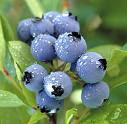As a reader of
slashdot, I read a lot of nutty stuff there. Here are a few highlights of the craziness that just makes me want to head for the barn.
Scientists Worry Machines May Outsmart Man - From the New York Times: "Impressed and alarmed by advances in artificial intelligence, a group of computer scientists is debating whether there should be limits on research that might lead to loss of human control over computer-based systems that carry a growing share of society’s workload, from waging war to chatting with customers on the phone."
Machines can do a heck of a lot around the farm, but I am NOT going to take orders from my hay baler.
----------------
573,928 Accounts Possibly Compromised in Network Solutions Attack - From The Tech Herald: "Network Solutions issued a Data Security Alert (DSA) on Friday, which reported the discovery of malicious code planted on servers supporting their E-Commerce merchants’ websites. The code, discovered on 4,343 Network Solutions customer sites, might have captured transaction data for almost 574,000 cardholders."
So, if you shop online and/or use credit or debit cards, maybe you should think twice. Just another reason to use cash and shop at your local farmer's market or road side produce stand.
----------------
Electronic Grid Still Very Vulnerable to Electromagnetic Weaponry - From Science News: "Electromagnetic pulse is hardly a household term. But perhaps it should be. Every computer we buy, every system we turn over to computer control, every device that relies on electronic components — all cars, TVs and phones, for instance — makes us more vulnerable to such a high-energy rain of electrons."
Articles like this should make anyone without alternate electrical generation think twice. Not only can EMP weapons cause issues with the power grid, but
solar events could and even have caused problems. One doesn't need to completely live
off-the-grid, just be prepared. Maybe it is time to check the prices on windmills.
----------------
Reprogrammed Skin Cells to Create Mice - From the Wall Street Journal: "Two teams of Chinese researchers working separately have reprogrammed mature skin cells of mice to an embryonic-like state and used the resulting cells to create live mouse offspring."
Now here is a can of worms. Sure, this is helping forward stem cell research, but what about all the additional cats that will be needed?
 Throughout the history of the human species, we have been building with stone. The first stone homes were not much more than piles of rubble. Today, stone buildings can be huge and grand and complex or small and comfortable and simple.
Throughout the history of the human species, we have been building with stone. The first stone homes were not much more than piles of rubble. Today, stone buildings can be huge and grand and complex or small and comfortable and simple.
















